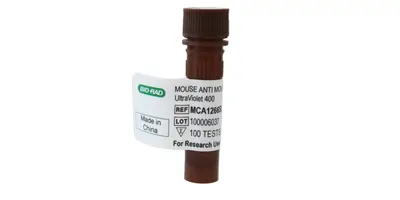HERCULES, CA — Bio-Rad Laboratories, Inc. (NYSE: BIO and BIOb), a global leader of life science research and clinical diagnostic products, recently announced the launch of StarBrightTM UltraViolet 400 Dye, the first in its range of unique fluorescent nanoparticles designed for use with a UV laser in flow cytometry applications.
StarBright UltraViolet 400 Dye offers exceptional brightness with narrow excitation and emission profiles, making it suitable for use in multicolor flow cytometry panels. Bio-Rad’s range of StarBright Dyes are conjugated to highly validated flow antibodies and are compatible with most flow cytometers and experimental protocols.
“The new StarBright UltraViolet 400 Dye offers a high-performance alternative to existing dyes excitable by the 355 nanometer UV laser, without the need for special buffers,” said Mike Blundell, PhD, product manager, flow cytometry, Life Science Group, Bio-Rad. “The unique properties provide researchers with greater choice and flexibility when designing flow cytometry experiments.”
Key benefits of StarBright dyes
- Compatible with new and existing protocols and suitable for use in multiplex panels.
- Resistant to photobleaching and highly stable with minimal lot-to-lot variation.
- Reliable Förster resonance energy transfer (FRET) for reproducible data.
- Work with common staining buffers, including special polymer dye staining buffers, for easy integration into multicolor panels.
- Ensure no loss of signal in fixation.
- Offer narrow excitation and emission profiles for improved resolution in new and existing multicolor flow cytometry experiments.











